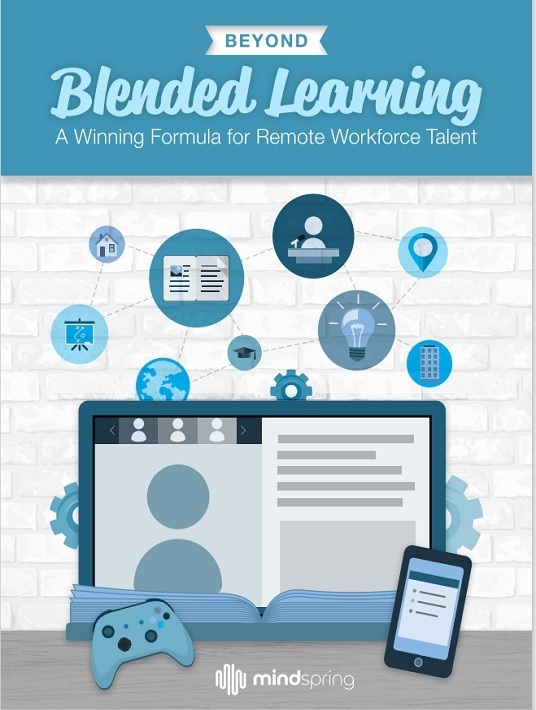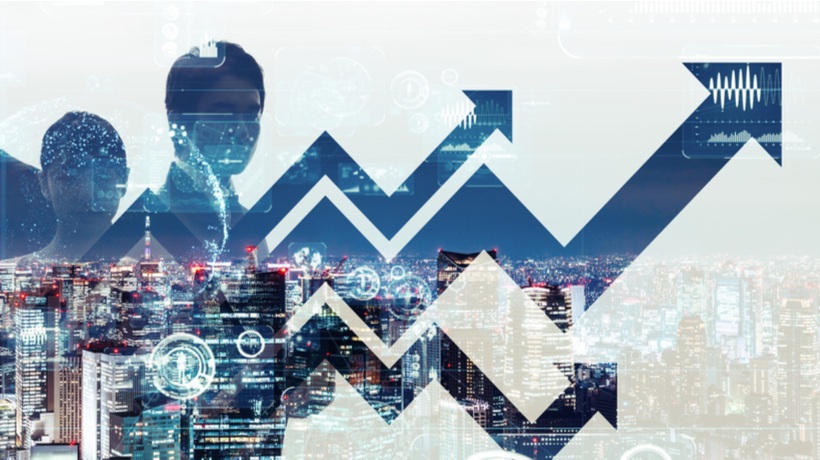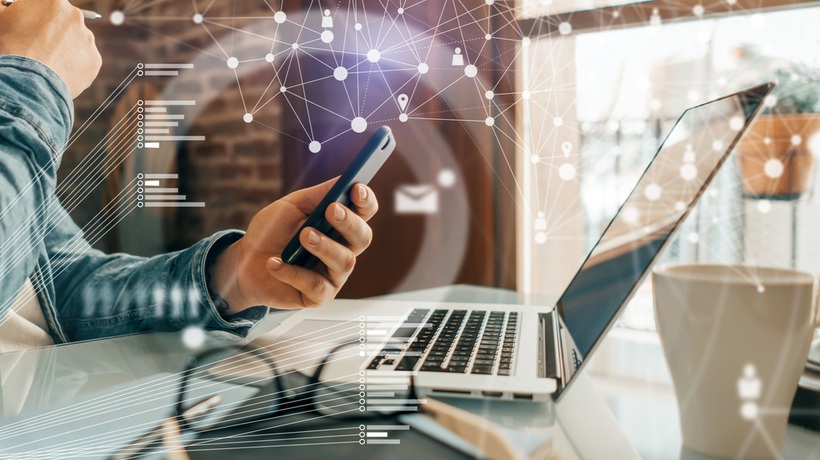Reevaluating Current Blended Learning Perspectives
This article is part of a series exploring the concept of blended learning for remote and on-site workers. What you are about to read is a fable. The company, AshCom, is fictional but the learning challenges faced by Kathryn, AshCom’s CLO, and her team are real and commonly shared by learning teams in large organizations. It is our hope that you will be able to connect with the characters, their challenges, and the solutions they discover. We also invite you to read the first eBook in the series.

The Instructional Designer
Kathryn, the Chief Learning Officer of AshCom, a manufacturing company in Minneapolis, Minnesota, had a deep appreciation for Darryl, one of the members of her learning team. He was a solid instructional designer with an artistic eye. He was also a deep thinker who carefully considered what he was going to say before he said anything.
Kathryn’s team had been tasked by the CHRO of AshCom to address two learning challenges. The first was the growing skills gap in manufacturing. As a greater percentage of employees were retiring at the 7,000-person company, AshCom was losing highly skilled people on machines that were becoming more complex while also finding it more difficult to recruit new people interested in working in smart manufacturing. The CHRO, Laszlo, believed that things would become even more challenging as time went on. Global competition was forcing every manufacturer to become more efficient and automated but that required people with deep skills and knowledge. Laszlo saw this as a significant threat to the future of AshCom.
The second challenge was a growing chorus of requests for more flexible work hours. Even remote work, especially among people who were not operating machines. The HR team was hearing this in interviews with potential team members. Existing team members were also asking about it. At first, Laszlo merely noted the requests but took no action. As the number of requests grew, he knew he needed to at least explore the idea.
Laszlo had a lot of questions about how this might work. What would it do to the culture of AshCom? Would it be a problem between those who worked on machines and could not work remotely and those in various offices that might be able to?
His question for Kathryn, in her role as CLO, was about learning. How could people be onboarded properly if they worked remotely? What would happen to their leadership development program? In general, how would learning work if a significant number of people were not on site?
The Learning Team Ponders The Blended Learning Equation
After meeting with Laszlo, Kathryn brought these two challenges to her learning team. She said she didn’t know if they were connected because she had only done some cursory research. And the discussion at the learning team weekly meeting only lasted about 20 minutes. She didn’t intend to solve these problems in that limited time. She only meant to raise them and give a little context. As a good leader, she relied on her bright team to mull over problems and come back with options that might be solutions.
At the end of the meeting, Darryl stayed back. He hadn’t said much during the team discussion. When Kathryn saw him waiting for the others to leave, she knew he had something on his mind. Likely something interesting.
Darryl told Kathryn he was considering an approach that might address both issues. But he needed some time before he was ready to discuss in depth. Kathryn told him to take the time he needed. The last thing he said as he walked out the door was, “Blended Learning.” Kathryn wrote that at the top of the whiteboard and put a note on it that said, “DO NOT ERASE.” It would serve as a good launching point for their next conversation.
Possible Blended Learning Solutions
Five days later, Kathryn received an email from Darryl asking for a time to meet. Kathryn found an available hour and set the meeting.
After greeting each other, Darryl said, “I thought I was on to something, but now I’m not so sure. As you described the two challenges, I kept circling around the idea of how the two might be connected, at least in their solution.”
“That’s why I wrote ‘Blended Learning’ at the top after you left,” said Kathryn.
“Maybe you should erase that,” said Darryl.
“Really?” said Kathryn. “That isn’t at all what I expected. Knowing you and a little of how you think, I figured you would come in with a well-researched and articulated solution around Blended. What happened?”
“I started to research, but the more I read, the more I concluded that there really aren’t solid concepts for Blended,” said Darryl. “I thought I knew what I meant, but I discovered that the definition I had in my head didn’t really work. The more I read, the more confused I became.”
“Walk me through what you thought and what you discovered in your research,” said Kathryn.
Defining Blended Learning
“I started with what I thought was a widely accepted definition. Blended Learning is simply a combination of instructor-led and eLearning,” said Darryl. “I thought of an actual blender. Add some traditional classroom time, toss in some eLearning, and blend. Like ingredients in a drink.”
Darryl continued, “Then I got thinking about learning objectives. But the more I read, the more it seemed like blended learning is mostly about the fact that it is blended.” “Not sure I’m following you,” said Kathryn. “We did some blended learning a few years ago, at least I thought we did. We took some of our instructor-led material and made eLearning modules for some it. Wasn’t this blended?”
“Let me try again,” replied Darryl. “It seems to be that learning objectives have been lost in a lot of what I’m reading. Maybe not lost. Maybe more taken a backseat. It seems like most people who push for blended learning do so because it is blended learning. Not because it is actually accomplishing what they want from the learning experience.”
“Back to the drink,” said Kathryn. “You mean just toss and blend without thinking about whether it should be a strawberry daiquiri or a frozen margarita?”
“Something like that,” said Darryl. “Except most of what I’m reading only talks about in-person or eLearning. Some people use the term ‘digitally infused’ but that seems to mean only traditional classroom with some sections delivered through eLearning.”
“Ok,” said Kathryn. “I think I’m following you.”
“Part of my struggle,” said Darryl, “is that most thinking on blended seems to revolve around just these two modalities for a learning experience. It seems antiquated. When I was a boy, my great-grandfather used to talk about ‘washing his teeth’ before he went to bed.”
“Because that’s what he did when he was a boy, before the time of toothbrushes?” asked Kathryn.
“Exactly,” said Darryl. “But there are so many other learning modalities possible now. Maybe there used to be only a few but now there are dozens of tools. Sorry for switching metaphors, but they are like tools in a toolbox. And we have so many more tools available to us.”
“When I started in learning,” said Kathryn, “we were not much further along than instructor-led with some options for books, articles, and limited video.”
“I’m not going to comment on how long ago what was,” said Darryl sheepishly. Kathryn smiled.
“I get your point,” said Kathryn. “We are way past only a couple of ways of delivering a learning experience. I think of the work we’ve done recently on building a true game and app development.”
“I read a couple of studies that gave percentages and categories,” said Darryl. “If learning was 0% online, it was traditional. If 80%+ online, it was called ‘online.’ Anything between 30% and 79% online and it was called blended.”
“But is that the goal of blended learning?” asked Kathryn.
“That is exactly my point,” said Darryl. “Who cares what percentage is online or in person? That shouldn’t be the goal of the learning experience. To be able to call it ‘blended.’ It’s like the category has devoured good instructional design. We shouldn’t start with the goal of having ‘blended learning.’ That should be that last consideration, not the first.”
“Now this is coming into more clarity for me,” said Kathryn. “We need to get back to the first principles of good learning science. Begin with those and see what the right answer is.”
Creating The Framework
“I think we need a framework that helps us determine which modality is the right fit. At the end of our team meeting, I jumped to the conclusion that a blended approach might be best for the skills gap and the request for more remote work. But the deeper I dug into it, the more confused I became,” said Darryl.
“I’m not surprised that you want a framework,” said Kathryn. “I suspect without one, you won’t make much progress. We constantly talk about providing the best learning experiences we can for our learners that also meet the needs of our company. So, let’s take a step back and do some more thinking.”
“I’m up for that,” said Darryl. “I really want to get my head around this.”
“Can I make a suggestion?” asked Kathryn.
“I’m open to whatever you suggest,” said Darryl.
“Get in contact with Rebecca from InnoVersity,” said Kathryn. “She was incredibly helpful in getting our heads around what it meant to build the true game for the managers. She has a solid understanding of learning science. And she has worked with dozens of clients like us.”
“I’ll do that,” said Darryl. “I enjoyed working with her on the game. I’ll let you know what I discover. Hopefully, it is a framework we can use that will help us solve the remote challenge and the skills gap challenge.”
Darryl stood up to leave. Although not typical at the end of a learning team meeting, he shook Kathryn’s hand and said, “I will get this figured out.”
“About that,” said Kathryn as Darryl turned to leave, “I have no doubt.”
Conclusion
Download the eBook Beyond Blended Learning: A Winning Formula For Remote Workforce Talent to discover how AshCom overcomes its L&D challenges using innovative blended learning strategies. Also, join the webinar to uncover valuable insights that will help you improve your L&D planning and learning delivery.



![Beyond Blended Learning: A Winning Formula For Remote Workforce Talent [eBook Release]](https://cdn.elearningindustry.com/wp-content/uploads/2021/11/shutterstock_1687381003.jpg)




